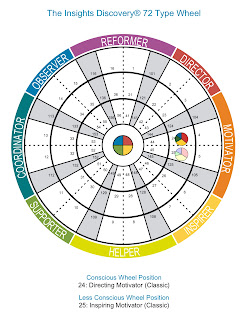Catalysts: the second leg of a starfish network
As with the starfish, a decentralized network can lose one or two legs and still survive. But when you have all five legs working together, a decentralized network can really take off. In their book “The Starfish and the Spider” authors Rod Beckstrom and Ori Brafman identify five legs upon which a decentralized network stands:
Leg 2 – The Catalyst A Catalyst is any element or compound that initiates a reaction without fusing into that reaction. In a decentralized organization, a Catalyst is a person who initiates a reaction and gets the organization going and then fades into the background by ceding control to the members. In letting go of the leadership role, the Catalyst transfers ownership and responsibility to the circle or decentralized organization. Once the Catalyst moves on, however, their presence is still felt as they provide the inspirational motivation to continue to spur others to action.
Additional characteristics of the Catalyst include:
Leg 2 – The Catalyst A Catalyst is any element or compound that initiates a reaction without fusing into that reaction. In a decentralized organization, a Catalyst is a person who initiates a reaction and gets the organization going and then fades into the background by ceding control to the members. In letting go of the leadership role, the Catalyst transfers ownership and responsibility to the circle or decentralized organization. Once the Catalyst moves on, however, their presence is still felt as they provide the inspirational motivation to continue to spur others to action.
Additional characteristics of the Catalyst include:
- Develops an idea, shares it with others, leads by example
- They trust the community and let go of the organization
- Often they are not aware of who is doing what in the organization as they are focused outward
- Casual acquaintances fascinate them, and they are always trying to connect people
- They are good at navigating complex social networks
- Very comfortable at any level of engagement in influential circles
- They never work on commissions – easier to be ethically pure, introductions are more long-term
- They have fun meeting and helping new people. They always ask “How can I help this person?”
- Mobilize people by sharing inspirational stories
- They are never pushy but work to try to understand you
- Mission oriented, not command and control or objective driven.
- Genuine interest in others - No one is boring; everyone is like a walking novel, because they care!
- Loose connections – They establish a loose social network with thousands of people. They are able to socially connect people into the network wherever they go.
- Mapping – When they meet new people, they immediately begin mapping out how they fit into their vast social network.
- Desire to help – wanting to help is the fuel that drives a Catalyst’s ability to connect.
- Passion – A Catalyst provides the inspirational drum beat for a decentralized organization because it cannot rely on command and control to motivate participants, it needs a strong and ongoing ideology to keep them going.
- Meet people where they are – You follow a Catalyst because he understands you.
- Emotional Intelligence – Intellectually brilliant, but they tend to lead with emotions. Emotional connections come first.
- Trust – With a decentralized organization, you never know what people are going to do. You can’t control the outcomes. All you can control is whether or not people have personal relationships with each other based on trust. Catalysts build trust throughout the network and the community.
- Inspiration – They are passionate about believing in the big dream and it is not about them. It is not for personal gain. They have a natural ability to inspire people to action.
- Tolerance for ambiguity – They do not know, nor really care who is doing what in the organization. They trust the community. The more decentralized, the less that is known. Starfish organizations need ambiguity to survive. It creates a platform for creativity and innovation.
- Hands-off approach – Once a Catalyst gets an organization going, they back off and cede control. People may get frustrated and say, “What are we supposed to be doing?” This leads people to take charge and have a high level of ownership.
See also
- Starfish and Spiders
- Starfish and Spider analysis
- Circles: the first leg of a starfish network
- Catalysts: the second leg of a starfish network
- Ideology: the third leg of a starfish network
- Pre-existing networks: the fourth leg of a starfish network
- Champions: the fifth leg of a starfish network
- Get more like this
More at www.StarfishAndSpider.com



Comments